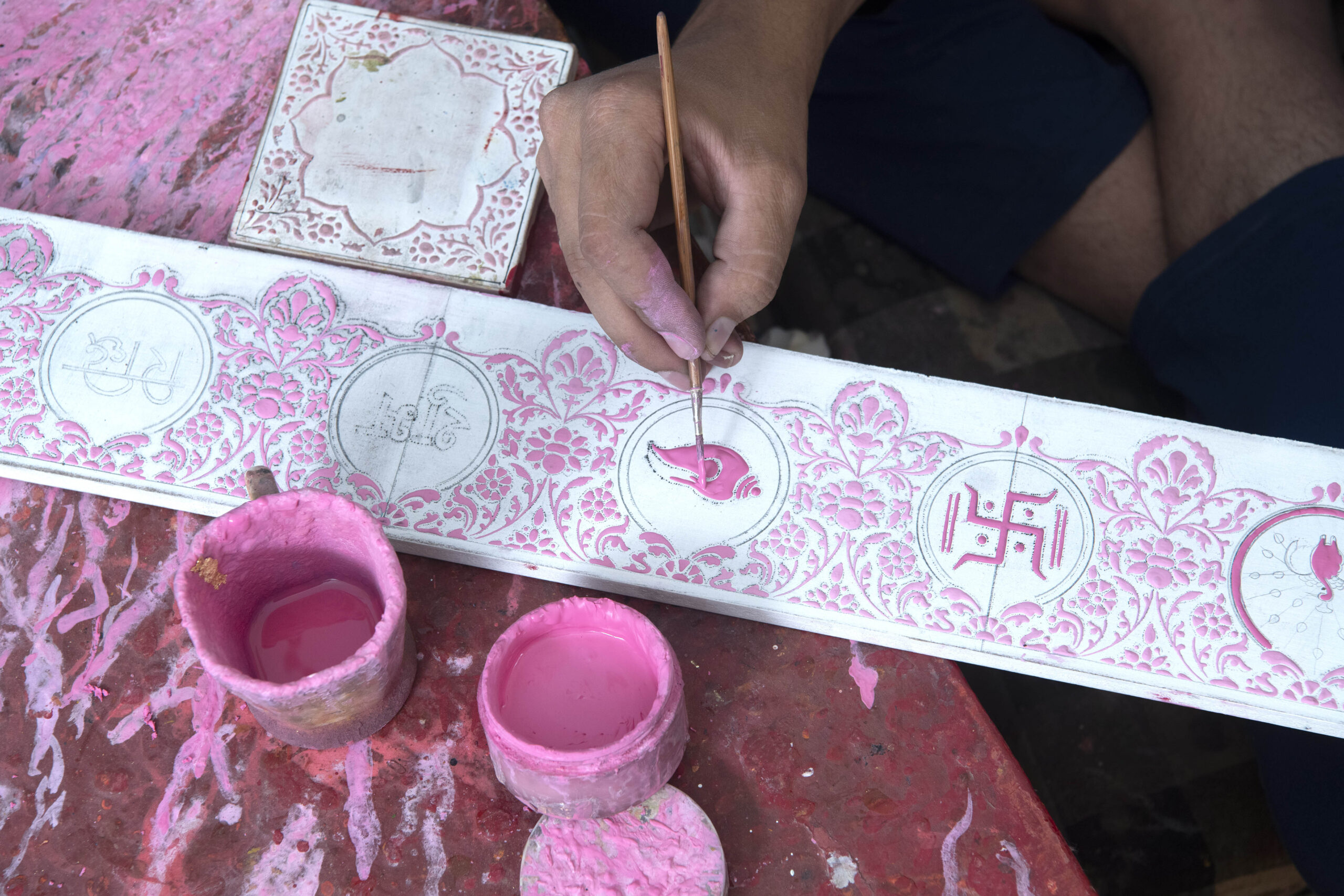
An exploratory visit to Bikaner more often than not commences with a tour of the 16th century Junagarh Fort. Formerly the residence of the erstwhile ruling family, it is a mélange of multiple architectural styles and lavishly decorated interiors. And it is within this stunning complex that visitors generally make their first acquaintance with Usta work, an unrivalled form of gold embossed wall-art, the resplendence of which can be seen also covering ceilings and pillars of the fort’s many palaces. Usta art is said to have travelled to the Mughal court from Iran (then Persia) and found its way over when Raja Rai Singh commissioned the Junagarh Fort in the year 1589. Also referred to as naqqashi, this art borrows its name from a contraction of the word Ustad, a term of respect used for maestros or highly skilled artists, many of whom subsequently made Bikaner home.

National award winner Shaukat Ali Usta’s homely atelier is a treasure-trove of finished and unfinished naqqashi artefacts–lamps, lamp-shades, surahis, kupis (containers), mirrors, and photo frames. Most of them are made of stretched and shaped camel hide, some wood, yet others of glass and marble. “It was the British who hit upon the idea of embellishing conveniently-sized, damage-proof, and easy-to-transport items with Usta art,” he shares. “Camel hide was the natural first choice. But with only one family of the traditional dapgar community presently crafting hide items, the demand for alternative materials has increased significantly.” All through this enlightening exchange, Shaukat sits hunched over his work station, meticulously laying warq (delicate slivers of beaten gold) on an embossed wooden frame. He will rest it for a few hours, before outlining the intricate design in black ink and filling in the smooth surfaces with red, green, or blue paint.
Across the snug room from him, his college-going son, Saif Ali, sits cross-legged, mirroring his father’s pose, and deftly embossing a large canvas. A painting-in-the-making for a customer, on which he uses a blend of ground brick powder and paint to create the high relief. Once done, this too will be set aside for a couple of hours to allow it to dry. The sixth generation in a long line of naqqashi artists, he is one of very few youngsters freely committed to this art. “Even though it is a lucrative practice, it’s laborious and time-consuming, and not everyone is as motivated to carry on the family tradition.” The painting that has his complete attention, once finished, is likely to fetch several lakhs but will reach fruition no sooner than a year later. Even smaller items, like a single lamp and shade (Rs 50,000) can take upwards of a month to complete. A small square (4”x4”) of the beaten precious metal, for instance, can range from anything between Rs 250 to Rs 350, depending on carat.

Fun Fact: Every four to five years, the well-worn cushions the Ustas sit on to create their works of splendour are sold off to eager buyers. A good shake down can often result in thousands of rupees worth of fine gold-dust that has settled into them over time. Record-holder so far: Rs 40,000!





